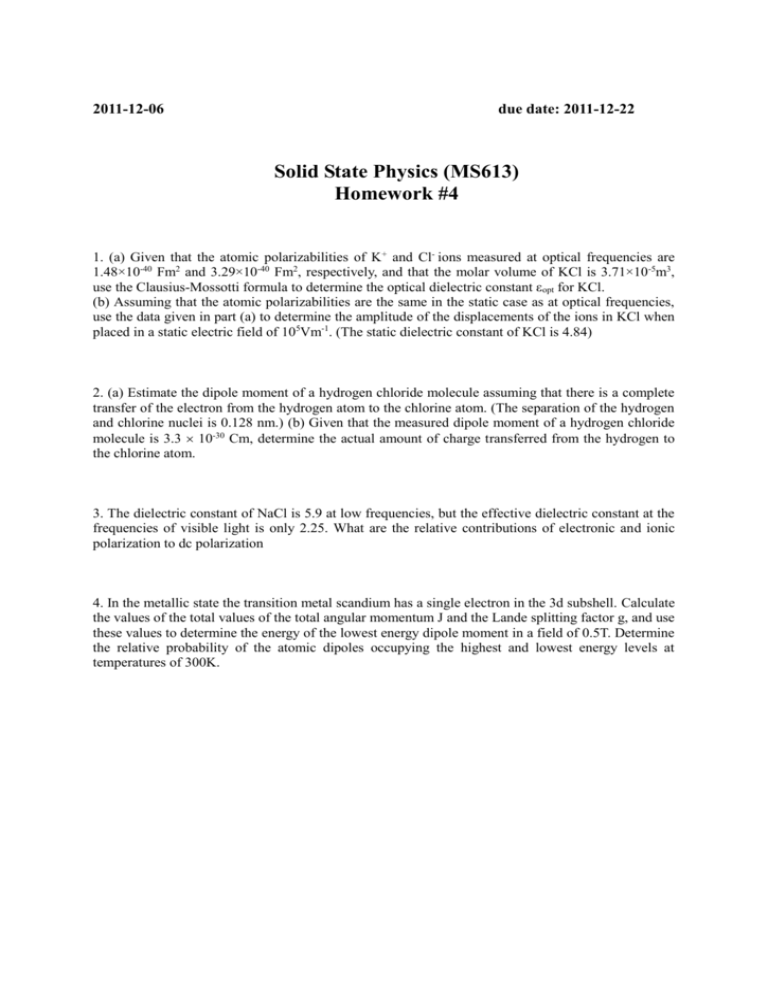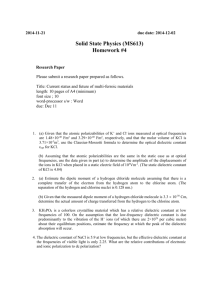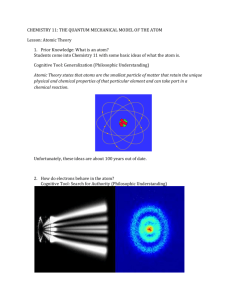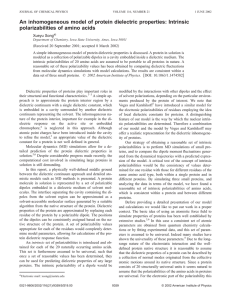2011-12-06 due date: 2011-12-22 Solid State Physics (MS613
advertisement

2011-12-06 due date: 2011-12-22 Solid State Physics (MS613) Homework #4 1. (a) Given that the atomic polarizabilities of K+ and Cl- ions measured at optical frequencies are 1.48×10-40 Fm2 and 3.29×10-40 Fm2, respectively, and that the molar volume of KCl is 3.71×10-5m3, use the Clausius-Mossotti formula to determine the optical dielectric constant εopt for KCl. (b) Assuming that the atomic polarizabilities are the same in the static case as at optical frequencies, use the data given in part (a) to determine the amplitude of the displacements of the ions in KCl when placed in a static electric field of 105Vm-1. (The static dielectric constant of KCl is 4.84) 2. (a) Estimate the dipole moment of a hydrogen chloride molecule assuming that there is a complete transfer of the electron from the hydrogen atom to the chlorine atom. (The separation of the hydrogen and chlorine nuclei is 0.128 nm.) (b) Given that the measured dipole moment of a hydrogen chloride molecule is 3.3 10-30 Cm, determine the actual amount of charge transferred from the hydrogen to the chlorine atom. 3. The dielectric constant of NaCl is 5.9 at low frequencies, but the effective dielectric constant at the frequencies of visible light is only 2.25. What are the relative contributions of electronic and ionic polarization to dc polarization 4. In the metallic state the transition metal scandium has a single electron in the 3d subshell. Calculate the values of the total values of the total angular momentum J and the Lande splitting factor g, and use these values to determine the energy of the lowest energy dipole moment in a field of 0.5T. Determine the relative probability of the atomic dipoles occupying the highest and lowest energy levels at temperatures of 300K. 5. An H- field of 40A/m is applied to a ferromagnet as in fig.1 and the total magnetic field B within the sample is measured to be one tesla. If the saturation magnetization is 1.4×106A/m, what percentage of the sample consists of domains magnetized parallel to the field? What is the magnetic susceptibility? Fig.1 Magnetic domain structure. (a) and (e): in a saturated ferromagnet (b) and (d): in a partly magnetized ferromagnet (c) in an unmagnetized ferromagnet. 6. The saturation magnetization of iron is 1.7 106 A/m. If the density of iron is 7970 kg/m3 and Avogadro’s number is 6.025 1026 per kg atom. Calculate the magnetic moment per iron atom in amps meter2 and in Bohr magnetons. (1 Bohr magneton B = 9.27 10-24 Jm/A. Relative atomic mass of iron = 56.)









